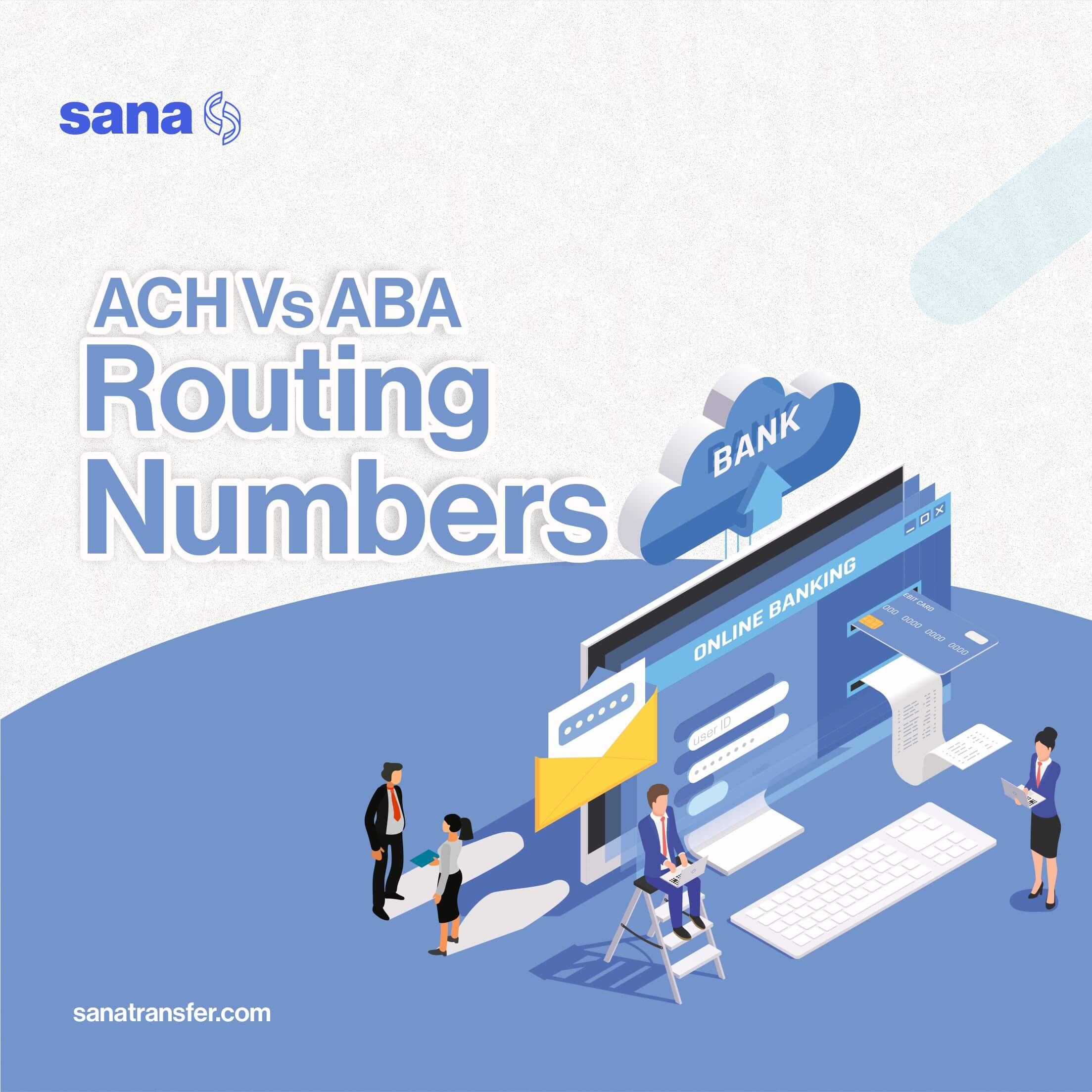ACH Vs ABA Routing Numbers: What's The Difference?
This article discusses the differences between the ACH and ABA numbers to help you understand where each is required and best used.

Carry out international transactions regularly? Then you may be familiar with routing numbers. The routing number is a critical piece of information that is required to initiate banking and financial transactions. While many people may have an idea of routing numbers, not many people know that there are two different types, which are the ACH and ABA numbers.
Although they are both routing numbers, certain characteristics distinguish them from each other. This article discusses the differences between the ACH and ABA numbers to help you understand where each is required and best used.
What is an ACH Routing Number?
ACH is short for Automated Clearing House. It is simply a system that stimulates electronic/digital payments and direct deposits between different financial institutions. Hence, ACH routing numbers are the unique nine-digit numbers that help to identify financial institutions/banks that participate in the ACH network.
Basically, ACH numbers were first introduced in the 1970s when a large number of cheques were in circulation, which tried to slow down the whole banking system. This initiated an even bigger industry-wide transition toward electronic/digital banking.
ACH routing numbers function is to route funds from one person’s bank account to another person's account via the ACH network. The whole system is used to pay bills, process direct deposits, as well as perform other kinds of electronic payments. The major purpose of ACH routing numbers is to make sure that money is accurately and efficiently moved between different financial institutions.
You can find ACH routing numbers on your bank statements, and personal cheques, or by simply contacting your bank/financial institution. Some financial institutions also provide this vital information on their websites. So you may be able to get it from your bank’s website.
Recommended - How to Send Money with a Credit Card
What is an ABA Routing Number?
ABA is short for American Bankers Association. It is a trade organization that depicts banks in the United States. ABA routing numbers are special nine-digit numbers that are used to identify financial institutions/banks that participate in the ABA system.
Essentially, ABA routing numbers function by routing money from one person’s bank account to another person’s account via the ABA network. This system is primarily used for wire transfers, traditional cheque processing, as well as other transactions. Unlike ACH routing numbers which are only used electronically, ABA routing numbers can be used for both electronic and paper financial transactions.
Just like ACH routing numbers, the purpose of ABA routing numbers is to ensure that money is accurately and efficiently transmitted between different financial institutions. Generally, ABA routing numbers are used for different transactions, such as wire transfers, cheque processing, etc.
ABA routing numbers are, in most cases, nine digits long, while the first two digits are between 00 and 12. While smaller banks are allotted just a single routing number, multinational banks can have several routing numbers.
You can also find ABA routing numbers on bank statements, personal cheques, or by reaching your financial institution. Some financial institutions and banks provide this vital information on their websites.
Related Article - Clearing and Depository Services (CDS) Inc - All You Need to Know
What Are the Differences Between ACH and ABA Routing Numbers
ACH routing numbers are primarily different from ABA routing numbers because they’re used particularly for electronic financial transactions. Basically, the first two digits of ACH routing numbers generally vary from 61 to 72, however, the first two digits of the ABA routing numbers vary between 00 and 12. Here are some other significant differences between ACH and ABA routing numbers:
1. Purpose and usage
As stated earlier, ACH routing numbers are primarily used for electronic transactions, while ABA routing numbers are generally used for both paper and electronic transactions.
2. Compatibility with different payment systems
ACH routing numbers are particularly used for electronic transactions, hence, the number may not be compatible with every payment system. However, ABA routing numbers are generally used for both electronic and paper transactions. Hence, they are more generally accepted.
3. Security measures
ACH transactions are generally processed via secure and safe networks and are subject to extreme security measures such as authentication and encryption. On the other hand, ABA transactions can be subject to various security measures. It largely depends on the financial institution and the kind of transaction.
4. Transaction settling
Transactions initiated using ACH routing numbers are usually quicker (same or the next day) than money sent on paper cheques using ABA routing numbers.
5. Transaction time
ACH transactions generally move more since they are executed in batches rather than one at a time just like an ABA routing number transaction, which is done using a paper cheque.
Bottom Line
The difference between ACH and ABA routing numbers is clear to see. Both of these numbers serve different purposes in the world of banking, especially when it comes to electronic and paper transactions. It all depends on the type of transaction you want to initiate. Nevertheless, both numbers can be used to execute a wide range of transactions.
SanaTransfer offers easy, fast and secure payment services with better rates and faster payouts for international remittance. Sign up now to get started.
